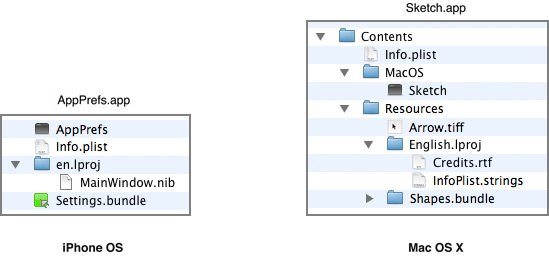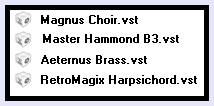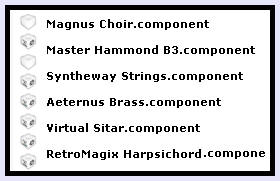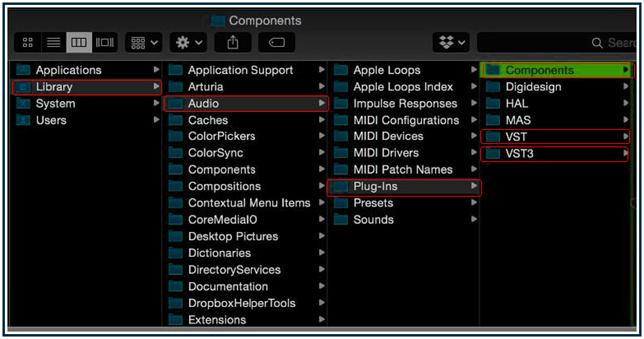Syntheway AudioUnits (AU),
VST (.vst)
and VST3 (.vst3) Plugins
Cocoa is Apple's native object-oriented application programming
interface (API) for their operating system macOS.
Syntheway Audio Units and VST for macOS are Cocoa bundles, a
convenient way to deliver software in Mac. Bundles provide a simplified
interface for end users. They can be placed by the user manually through
Finder.
About Bundles
Bundles are a convenient way to deliver software in macOS and iOS. Bundles
provide a simplified interface for end users and at the same time provide
support for development.
Bundles and Packages:
Although bundles and packages are sometimes referred to interchangeably,
they actually represent very distinct concepts:
-
A package is
any directory that the Finder presents to the user as if it were a
single file.
-
A bundle is
a directory with a standardized hierarchical structure that holds
executable code and the resources used by that code.

Loadable bundles written for
the Cocoa runtime environment include a few features specific to Cocoa.
Because they are written for Cocoa, they contain code for Objective-C
classes. In particular, every Cocoa loadable bundle contains a principal
class. The code loading mechanism provided by the NSBundle class uses a
bundle’s principal class as an entry point. Applications loading bundles can
ask NSBundle to find the principal class and use the returned Class object
to create an instance of that class.
NSBundle finds the
principal class in one of two ways. First, it looks for the
NSPrincipalClass key in the bundle’s information property list. If
the key is present, it uses the class named by the key’s value as
the bundle’s principal class. If the key is not present or the key
specifies a class that does not exist, NSBundle uses the first class
loaded as the principal class. If the bundle is built with Xcode,
the order of classes as viewed in the project determines the order
in which they are loaded.
How to Install VST Plugins
-
Unzip the downloaded file if
it is an archive like .zip or .rar. You should only see a file with a .vst
extension. This is the actual file required for the plugin.
-
Move the .vst file to the VST
folder in your audio plugins folder.
-
If your DAW is running, close
it and restart it. When your DAW starts up, it will rescan your plugins
folder and detect your recently installed plugin.

How to Install Audio Units
Plugins
-
Unzip the downloaded file if
it is an archive like .zip or .rar. You should only see a file with a
.component extension. This is the actual file required for the plugin.
-
Move the .component file to
the Components folder in your audio plugins folder.
-
If your DAW is running, close
it and restart it. When your DAW starts up, it will rescan your plugins
folder and detect your recently installed plugin.

Other Plugin Formats
You might come across another
folder labeled VST3, this is for VST3 plugins which are not as common as of
yet. They can be identified with the .vst3 file extension. MAS is used for
MOTU Audio System. HAL is Hardware Abstraction Layer and you should not be
needing to change anything there.


